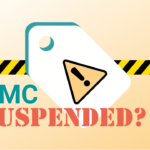
How to start an e-commerce store from scratch
Welcome to 2020, where you’ll find commerce, augmented reality and more. Fear not, as e-commerce is still in a position of growth, and is an important asset for your business or brand to utilise. This article will explain how to build an e-commerce store from scratch, meaning you won’t need to compile tons of lists before you get started.
Pre-planning: Do some research
Before you can launch your ecommerce store, you’ll need to do some basic market research
You should decide what are you going to sell, the price points you’ll use, which suppliers are you going to use, how your product packaging will work, and how you’ll incorporate shipping into your business. You’ll need to know who your main competition is, and what they currently offer to consumers. This key knowledge is needed before you can make any final decisions. It’s important to consider entering into a niche of the market, as there will be less competitors and you’re likely to stand out as a specialized expert in your field.
One useful approach to doing this would be to lay out a detailed business plan before you start crafting your e-commerce store.Some things to consider include your location, what kind of business you’ll be pursuing (B2B or B2C as an example) and how you’ll handle your product delivery.
1.Naming and registering your business
If you’re not creating an online store component for a pre-existing business, you’ll need to start off with the basics of naming your business. You’ve already decided what kind of industry you want to be in; so this part should be more fun!
This name is essential, and should make sense for your industry. Remember that this name can impact your position in the market, so you don’t want to choose something that is too generic or forgettable. A good name will give the customers an idea of what kind of products are sold or the general marketplace that your business operates in, but is not too obvious or common.
There are a number of name generators to use – while we don’t recommend choosing a name at random, this can help you come up with more detailed keywords that could help you find your perfect business name. Once you’ve found something you like, it would be wise to check if the domain name is available, and which price points are available. You don’t have to stick to .com, but that’s the most prominent and most popular domain.
Remember to think about the brandability of the name – and don’t choose words that are too common or obvious.
Once you’re clear on your brand name, products and message, you should make sure you’ve covered all legal ground for the business, including registering for an official business in your country. You’ll need to make sure you’re registered for tax purposes, as you don’t want any complications in this regard. If you’re hiring any employees, this might include official contracts of employment and tax documentation.
2.Hosting your website
Now, you’ll need to think about the functionality of your website. You’ll need to purchase your chosen domain and host your website. Some e-commerce providers include this service in their payment plans, so you should research which e-commerce platform you’ll be using. If you’re looking to use a plugin for an existing site, you’ll need to determine which plugin will work best for you and if it is compatible with your website. It’s important that your e-commerce store has all of the features that you’ll need for your business, including a payment portal and shipping if you require this for your business.
If you’re looking at using a plug-in, you might consider hiring a professional web developer to craft a beautiful store for you in record time. However, it’s still very possible to learn the ropes yourself if you’re on a budget. Professionals can help you do due diligence and can inform you of any costs that you might’ve forgotten, including premium extensions to wordpress stores, email marketing tools and more.
If you need somewhere to begin, you can try GoDaddy, Bluehost, Shopify or WordPress.
3.Design the website
Regardless of if you’ve got extra help or not, your store needs to look amazing to entice your customers. This is the fun part, as you’ll be crafting your brand’s identity! You’ll get to decide on website themes and user experience design, product images, a brand logo and more. If you need help with this part, you might want to consider hiring a designer who can help you out quickly. As with website hosting, it’s totally possible to do this on your own if you’ve got good tools to use.
Some vital features to add to your website include a landing page, an ‘about’ page for your brand story, a contact page, product/service pages, access to customer reviews, a detailed FAQ, an image gallery and your store’s social media/channel links. Remember to include enough information on your product pages, including high-quality imagery, descriptions of the product, variations and options available and a visible price tag.
A good free tool for logo building is Canva, and there are lots of great templates to choose from, where you can mix and match fonts and colours until you’ve come up with something great.
Pro Tip: Make sure your website is optimised for mobile transactions, as more and more mobile device users are active spenders. This can be done when you’re playing around with your website design, as most theme builders include displays that allow you to test the dimensions that would be seen on certain mobile devices. Don’t forget about your buyers who are on the move!
4. Choosing sales channels
Naturally, you’re marketing your website, but maybe there’s a platform or two that would integrate really well with your e-commerce store. For example, what if you want to start selling your products in Takealot in addition to your own store? It’s also possible for you to sell over social media platforms, such as Instagram and Facebook, if this would be a good location for your target audience.
ShoppingFeeder is a great resource to consult once your e-commerce store is up, as it’s a multi-channel marketing solution that can boost your reach. Larger marketplaces offer a great amount of daily traffic, so it would be useful to leverage this in addition to your organic store visitors.
5. Payment platforms
Depending on which platform you’ve used, you’ll need to make sure your payment portal is up and running. This means that your customers should be able to make secure payments from their initial visit to your site.
This might require integration with a new platform such as Shopify, WooCommerce or OpenCart. It’s vital that you don’t present your e-commerce store to visitors while there are still inconsistencies and glitches present, which could hinder your store’s reputation. Make sure that the platform you choose is a good fit for your e-commerce business.
Tip: Keep a small amount of stock while you’re starting out, depending on your space limitations! You don’t want to overspend on inventory before you’ve got enough customer interest. While you’re considering stock and payment, you should also consider how you’ll deliver – which courier will you use? Will you hand-deliver or ship off to a warehouse? These are important factors that you should be clear about on your website, so that there is no confusion when a customer places an order with you.
6.Go live
Now that your store is functioning, it’s time to publish it for your customers to see! This is truly exciting, as you’ll get to see the result of your labour as you watch your idea come to life. However, your checklist of things to do isn’t yet complete…
7.Marketing your store
The natural next step after going live is marketing! You’ll need to put your name out there so that customers know who to look for when they think about your niche or industry. This can take many forms, including email campaigning, content marketing, social media ads and boosting social media posts, pay-per-click campaigns and SEO reports.
It might be wise to consult with a specialist, or you could read up about e-commerce marketing and take a stab at it yourself. It’s vital that any posts you make include relevant keywords and are targeted at the right audience for your products or services.
A useful idea you might want to use is a giveaway to celebrate your launch, as this will entice new customers to follow your social media profiles and visit your website, because they are incentivized to do so. You will definitely gain broader brand awareness this way, and potentially a few sales, too. You can tie this in to email marketing campaigns as well.
You might consider starting a blog that you can use for content marketing, or starting a number of social media pages that will showcase your e-commerce offerings. The point is, you’ll need to be active in promoting yourself, be it in-person or on multiple online channels.
8. Understanding your metrics
Now that you’re live and selling, you should keep a steady eye on your data regarding traffic, sales, bounce rate and more. It’s important that you begin to establish a connection with your customers, and look at any weak points where your customers may have abandoned a sale.
This is key for any e-commerce business, and highlights a sense of accountability for the business owner to provide an improved service for their clients. Google ads and analytics are a great starting point for understanding data, and can help you tailor products for specific customers.
Conclusion
In summary, it’s not so simple to build an e-commerce website from scratch, but it is definitely possible. Your customers will surely benefit from your increased accessibility and reach. Some things you’ll need to consider include website hosting and domain names, brand identity and graphics, payment platforms, theme design and features, marketing and inventory management and shipping, and more!
Remember to consult a professional if you’re truly stuck, like ShoppingFeeder. ShoppingFeeder can help you with analytics and are experts at multi-channel marketing, if you’re looking for a boost.





